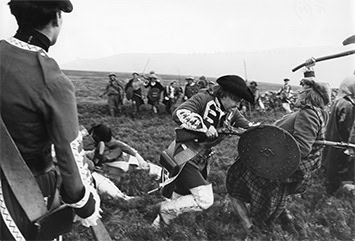Back in the 1990s I had the pleasure of editing the column on film for Perspectives, and now I am returning—albeit in slightly different garb—to that role, beginning with this issue. One of the important new initiatives for this column will be to bring distinguished scholars to the pages of Perspectives for commentaries on cinema. Under the rubric “Masters at the Movies,” this column will feature a variety of articles crafted by some of the most accomplished teachers and scholars in the profession. These authors may engage film in a variety of ways. Some will comment on significant new productions that have appeared recently on movie and television screens. Others will write about several films that were released many years ago and which dealt with a particular theme from history. Some of the contributors will focus on dramas and documentaries that interpret events and portray individuals from the past. Others will write about general entertainment films (rather than movies that are specifically about history). These authors may suggest that a study of feature films illuminates issues and controversies that excited filmmakers and movie audiences years ago.
Some of these contributors will be familiar to the readers of Perspectives, because they have written extensively on the subject of film. Most of the authors, however, are known principally in connection with their general contributions to scholarship rather than because of their specific work on film. Since our readers rarely encounter these authors’ observations about the movies and television programs, these commentaries should be of considerable interest to members of the AHA.
I am especially pleased that John Dower has agreed to inaugurate “Masters at the Movies” with an analysis of Clint Eastwood’s recent film, Letters From Iwo Jima. Dower is Ford International Professor of History at MIT. He is well-known for his scholarship in Japanese history and in the history of U.S.-Japanese relations. Among his several books is one that received the Pulitzer Prize, the National Book Award, the Bancroft Prize, and the John K. Fairbank Prize in Asian history: Embracing Defeat: Japan in the Wake of World War II (1999). Dower also has received considerable praise for War Without Mercy: Race and Power in the Pacific War (1986). Dower has taught an interesting course at MIT that examines visual images and other expressions of popular culture in Asia.
The subject of Dower’s essay is of obvious interest to historians. Recently, Clint Eastwood attracted international attention by examining a historical event through two different but related films. Eastwood’s first movie, Flags of Our Fathers, portrays the experiences of the American soldiers who placed a U.S. flag at the top of Mount Suribachi during the battle (seen in the famous Pulitzer Prize–winning photograph). The movie follows three survivors of the fighting at Iwo Jima after they return to the United States and are honored as heroes in public ceremonies. The three men sense that they were merely available for the photograph, and that the real heroes of Iwo Jima lay dead on the island. Later in the same year (2006) Eastwood released Letters from Iwo Jima, which portrayed the battle from the Japanese soldiers’ point-of-view. Eastwood shows the young men fighting tenaciously against a much larger force of U.S. invaders. Eastwood’s sympathetic characterization of a Japanese military lieutenant general on the island (played by Ken Watanabe) is based on letters that the officer sent back home to his wife and children. Letters from Iwo Jima features actors speaking Japanese with English subtitles. The film received an Academy Award nomination for Best Picture.
In the following essay John Dower examines Eastwood’s treatment of history in Letters from Iwo Jima, and he points to some of the important primary and secondary sources that inform us about the famous battle of World War II.



